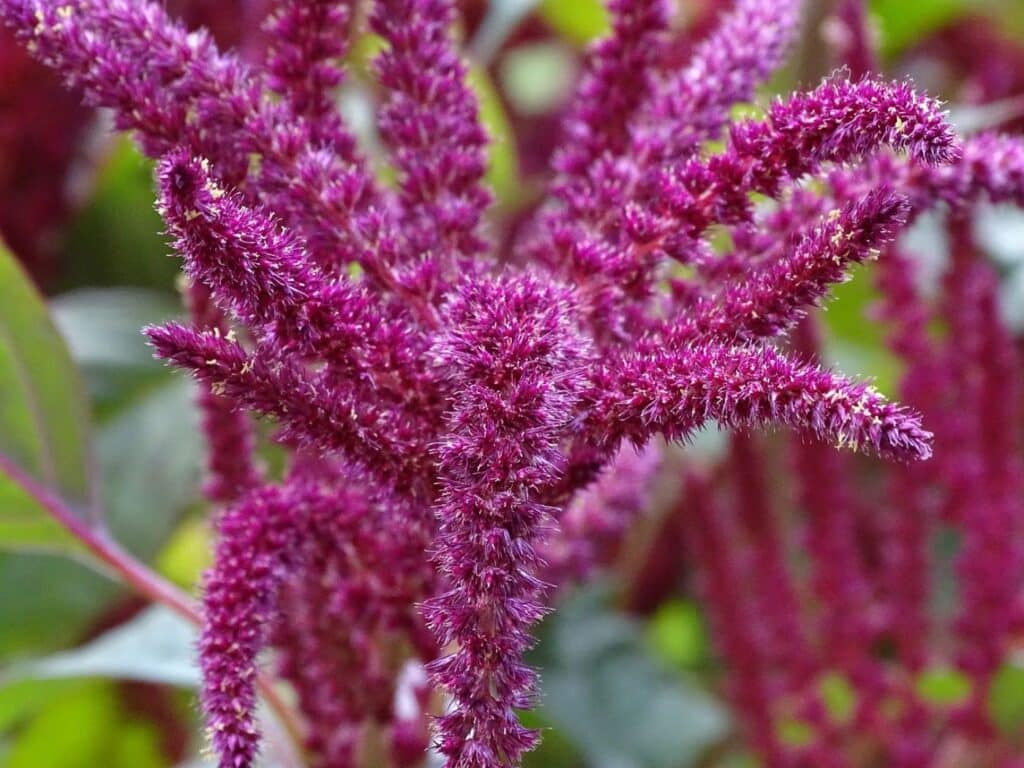Amaranths (Amaranthus) are very interesting plants to grow in your garden. There are 70 species of this flowering crop plant, and some varieties are better equipped as food crops. In contrast, other species, like prince’s feather (A. hypochondriacus) or Joseph’s coat (A. tricolor), are more attractive and better for ornamental gardens.
Amaranth plants are often paired with companion plants like cucumbers, nightshades, marigolds, sweet potatoes, or sweet corn. This is because amaranth is known to enhance the growth of these other species. After all, they can naturally amend the soil, fix nitrogen, and repel pests.
In this guide, we are going to take a closer look at these companion plants, and we are going to discuss different ways to combine and use them in your garden spaces.
What to Grow with Amaranth
Amaranth can be used in crop or ornamental gardens because their edible seeds and crimson red blooms are striking. If you want these seed plants to grow healthy and strong and look beautiful, you should pair them with companion plants with similar growing requirements.
Amaranth plants prefer full sun positions but can benefit from afternoon shade in hot regions. These plants are easy to grow and can be established in just about any well-drained soil, but will need to be watered regularly to keep them in good condition.
Combining amaranth with nutrient-hungry plants is also best because this grain variety is known to replenish the soil with nitrogen, which boosts the growth of other beneficial plants.
Let’s look at companion plants that will benefit the most from growing next to amaranth and that love full sun positions, free-draining soil, and frequent watering.
Cucumbers
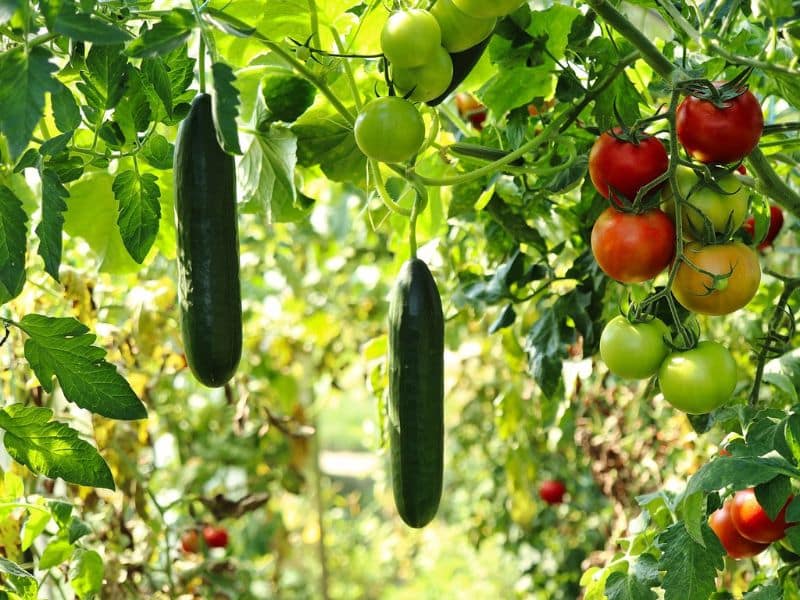
Cucumbers (Cucumis sativus) can be terrific companion plants because they will benefit a lot from the beneficial predatory beetles that amaranth attracts. These beneficial beetles will help deter many harmful pests that feed on cucumbers. Amaranths will also help cucumber plants grow healthier because they will nourish these crops.
Cucumbers love direct sun, and they should be grown in free-draining soil. They also need regular watering so they can grow juicy fruits.
Some gardeners like to use amaranth as a trellis for vining plants like small cucumber varieties because this will keep your delicious vegetables off the ground. Cucumbers can also be a good ground cover for amaranth because it will keep the soil moist so your crops won’t dry out.
Nightshades
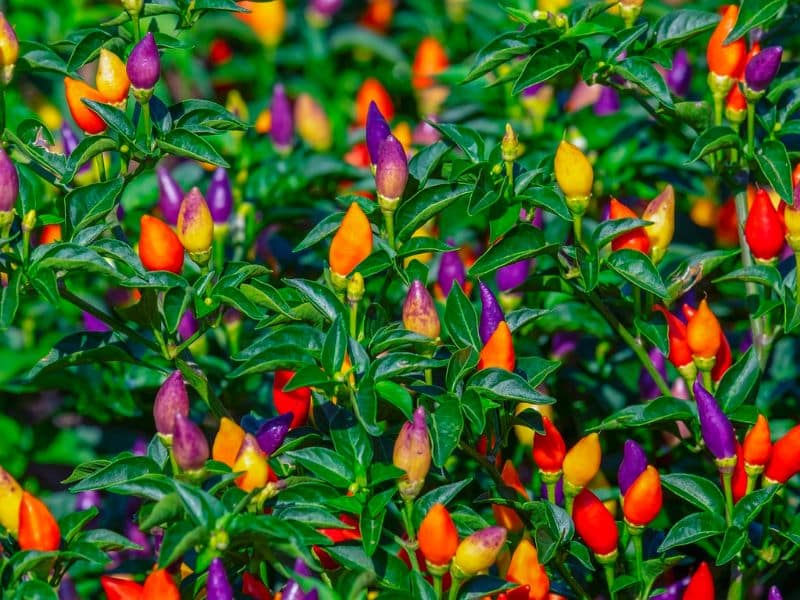
Nightshades (Solanaceae) can also greatly benefit from companion planting with amaranth. You can combine amaranth with any nightshade family member, including tomatoes, peppers, chili peppers, chili plants, potatoes, and eggplants.
The amaranth will act as a host for beneficial beetles that feed on pests that might attack nightshade family members. It is also believed that amaranth can boost potato yields because it acts as pest control and nourishes potatoes by adding nitrogen to the soil.
Members of the Nightshade family all have similar growing requirements. These warm-weather crops require direct sun and well-drained soil and must be watered regularly.
Because amaranth tends to produce tall stalks, growing them behind your nightshades is usually best so they won’t deprive your vegetables of sunlight.
Marigolds

Marigolds (Targetes) are great for companion planting with all sorts of crops because they protect your vegetables and amaranthus plants from pests. This is because the marigolds will act as a sacrificial plant that will lure common problems away from your cereal crop and towards the marigolds. When the marigolds become too infested, you can quickly clear them out, and your other plants will still be in great shape.
Marigolds love lots of direct sunlight-free draining soil, and they should be watered regularly to help them flourish.
These beautiful flowers will look rather striking if you plant marigold flowers in a row in front of your amaranth plants because the yellow and orange flowers will form a striking contrast with the vivid red amaranth blooms.
Sweet Potatoes
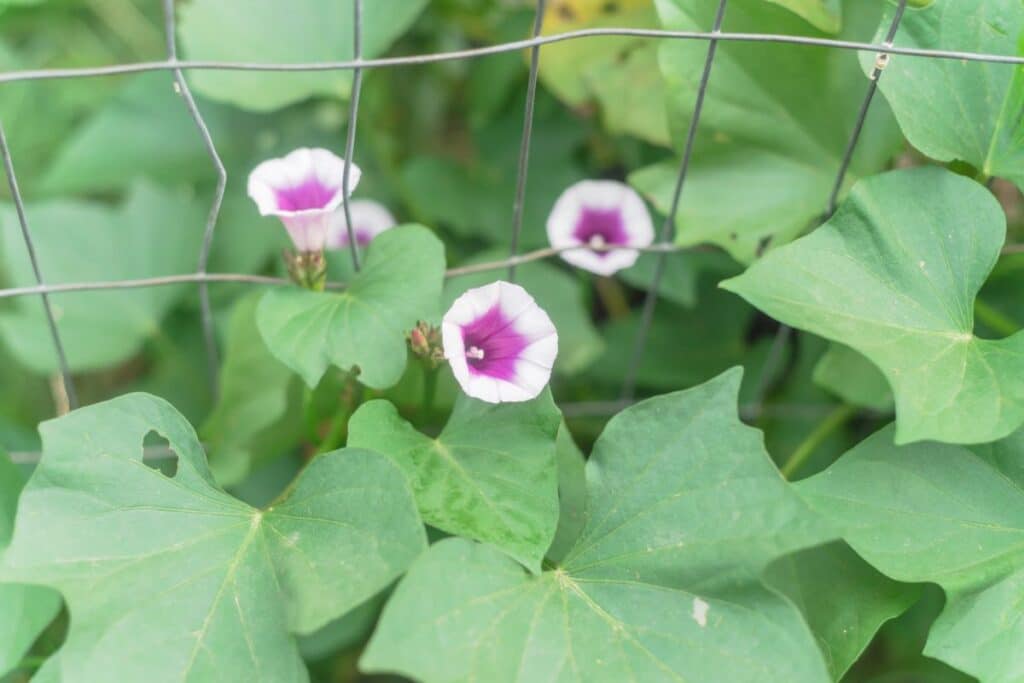
Sweet potatoes (Ipomoea Batatas) are good companion plants because this type of combination will offer mutual benefits to both plants.
The sweet potatoes will be protected by the beneficial beetles found on the amaranth, and these cereal crops will also fix nitrogen in the soil to nourish your sweet potatoes.
The vine plants will act as a ground cover around amaranth to keep the soil cool and prevent too many weeds from sprouting in your garden.
Sweet potatoes love lots of sunlight and well-drained soil, and they flourish with regular watering, although they can withstand spells of drought.
It is important to remember that sweet potato vines can thrive and smother your amaranth plants if there isn’t enough room for both species to expand.
Sweet Corn

Farmers often pair amaranth with sweet corn (Zea Mays L.) because it is believed that amaranth will improve the taste of your corn. The cereal plants will also protect your corn from bad bugs and will help them grow more robust because they will nourish the soil.
Sweet corn grows well in any well-drained soil, and it needs plenty of direct sunlight to flourish. These amaranth companion plants can survive spells of drought but grow best when it is regularly watered.
Because both plants are relatively tall, it is usually best to plant amaranth and corn in rows next to one another with plenty of room between them. This way, both species will receive enough sunlight.
What NOT to Grow with Amaranth
There are some plant species that won’t develop well next to amaranth. In general, it is best to avoid pairing these plant species with brassicas like cauliflower, broccoli, or cabbages. This is because brassicas have a powerful scent and might attract too many pests.
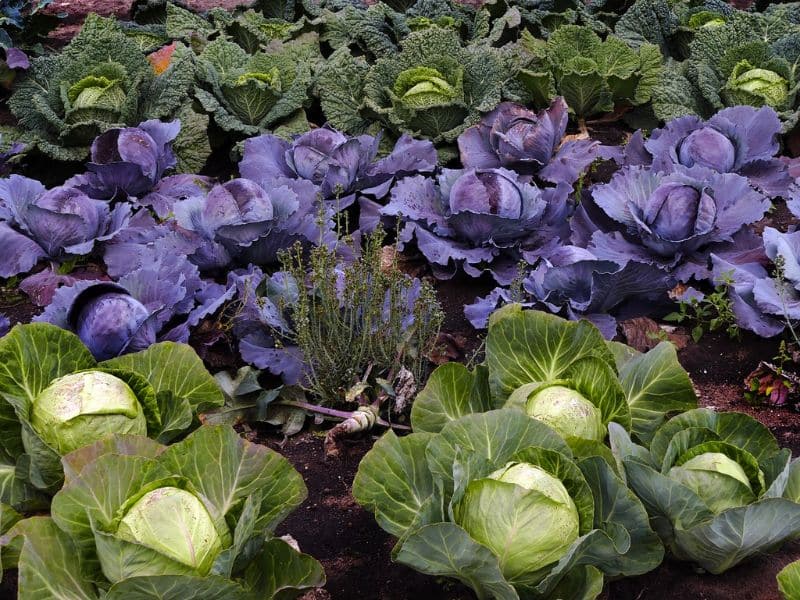
Some gardeners also warn against planting the same crops closely together. Amaranth grows quickly and the plants can quickly start competing for nutrients if they are positioned too close to one another.
Landscaping Ideas for Amaranth and Companions
Because amaranth is such a versatile plant, you can use it in all sorts of scapes and garden setups. Here is a quick look at the best landscaping concepts for these plants.
Living Trellis for Crops
You can grow a row of amaranth next to vine plants like cucumbers or sweet potatoes. The vine plants will climb up onto the amaranth which can help save some space in your garden or can keep your veggies off the ground.
Mixed Borders or Hedges
Amaranth is often used as an ornamental species and can look instead striking as a border plant or wildflower hedge. To create a fascinating mixed effect, you can use it and other beautiful ornamental species like marigold flowers, grasses, or sage in your flower beds.
Final Thoughts
Amaranth has many suitable companion species, like cucumbers, nightshades, marigolds, sweet potatoes, and sweet corn. This plant is very functional in vegetable gardens because it protects crops and replenishes the soil. It is also beautiful and is often grown in flower gardens to create a striking effect.
We hope our guide made selecting suitable companions for your amaranth plants easier and that you can now create a more beautiful garden that thrives.
Learn more about the Amaranth flower meaning to see why people love this plant!

